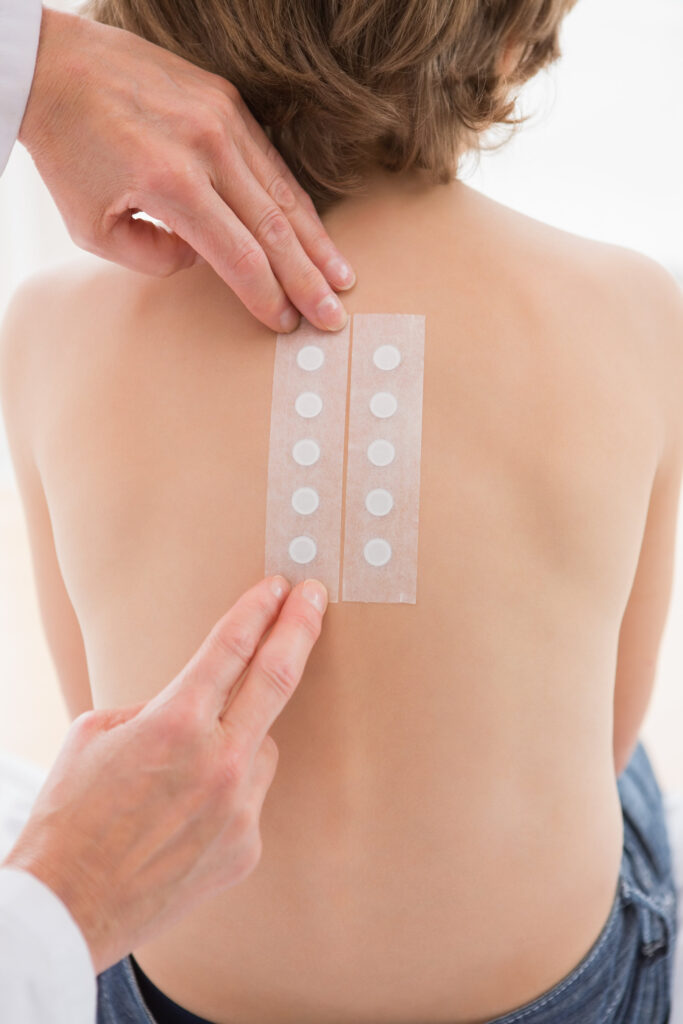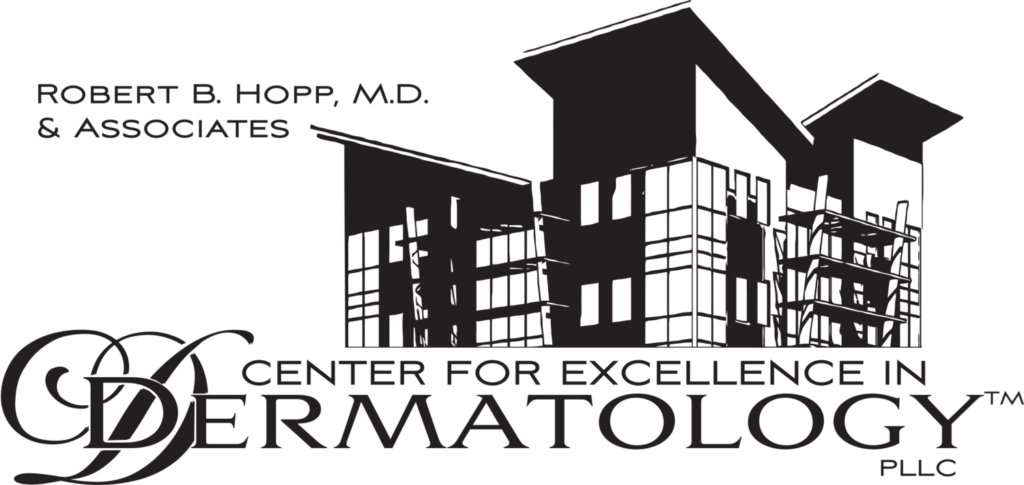Itching and burning sensations are common side effects.Try not to scratch the patch test area. Scratching can irritate your skin and may make the itching worse. It also can affect your doctor’s ability to interpret your skin’s reaction. If the itching or burning becomes severe, you should contact us during office hours at (509) 735-1100.
Allergy Patch Testing
What is AllergEAZE?
AllergEAZE is a reliable, diagnostic test that we offer to our patients who are suspected of having chronic cutaneous contact dermatitis or skin allergies.
We test for 70 of the most common skin allergens in North America with a state-of-the-art comprehensive panel. This extensive list of allergens has not been previously available outside of large institutions like the University of Oregon. Some of the allergens we test for are ones that people commonly encounter in their environment, such as Neomycin, nickel, and formaldehyde releasing agents. The extended panel also includes more than usual allergens including budesonide for diagnosing an allergy to topical steroids.
Our service includes post-test counseling to educate you on products that contain the allergens that cause you problems and alternative products that do not contain them.
People who would benefit most from the testing are patients with atopic dermatitis that do not respond to standard treatments, undiagnosed chronic eczematous dermatitis, and environmental exposure to allergens. The patch testing is not helpful in the diagnosis of the inhaled allergens (hay fever) or food allergies that are commonly tested for using a prick test or a scratch test methods. These patients would be better served by an allergy doctor.

Is anyone eligible to have the patch testing?
Yes. The patient must have a clear back to apply the patch tests.
This means there can not already be a red rash on the back when the patch tests are applied.
Do I have to be seen in this office prior to the testing?
No. As long as you can provide documentation from another physician’s office that reflects a “contact dermatitis” diagnosis, you may schedule the patch testing with our office. The actual testing will be performed once a prior-authorization has been submitted and approved by your insurance company.
Does insurance cover the testing?
Most insurance companies require pre-approval for the testing to be covered. The only insurance company that does not require pre-approval is Medicare as long as the patient has been diagnosed with contact dermatitis and that is noted in their chart.
Can I have the patch testing even if I don’t have insurance?
Yes. Please contact our office for what the private pay cost of the patch testing panels and office visits run.
Is there anything else I need to do in preparation for the testing?
It is very important to stop taking any allergy medications (antihistamines) and steroids (topical and oral) for at least two weeks prior to the patches being applied and to not resume until the final evaluation is done a week later.
When do I come in for the patch testing?
The patches will be placed, usually on your back, on a Monday or a Wednesday, left on for 48 hours, with two follow-up appointments that week. During these follow-up appointments, the skin will be examined for signs of redness and inflammation. These signs of reaction determine which of the chemicals you are allergic to. There will be a total of five appointments needed for the patch testing:
1
Day one: Patches will be applied.
3
Day three: Patches will be removed and the first reading will take place.
5
Day five: The second reading will take place.
7
Day seven: Last reading. After this appointment, you can go back to taking any of your usual allergy medications and steroids and you can go back to showering or bathing as usual. We will then set up an appointment with your provider and Dr. Hopp to review all results.
More FAQ
During this week-long process, it is very important that your back doesn’t get wet. You will have to keep your back completely dry for the entire week-long process, even after the panels are removed since the panels are outlined and numbered with colored markers to identify the location of each allergen.* Getting these markings wet will wash them away, and we would have to start the process all over again. So you cannot take any showers for one week. You can, however, take a sponge bath or take a very shallow bath during this time, as long as you make sure not to get your back wet. Likewise, you’ll need to avoid any strenuous activities that would either pull the panels off or make you perspire enough to loosen the tape or wash off the markings.
*Please note: There is the possibility of the ink we use to mark the locations on your back rubbing off on your shirt and not washing out. So it’s probably a good idea to either wear dark shirts for the week or wear an old undershirt or tank top between you and your shirt.
Some reactions to the substances in AllergEAZE appear within a few days, while others can take as long as a week to appear, this is why we require 3 follow-up evaluation appointments. Your doctor will discuss your results with you during your last appointment.
If you test positive, your doctor will explain which substance you are allergic to and talk to you about how to avoid contact. Your medical provider will provide information about:
Where the substance can be found at work and at home.
Which products are likely to contain this substance.
Steps you can take to avoid this substance, and alternative products you can use that don’t contain this substance.
Negative results are very common. If you test negative, you will not have to avoid products that contain the allergens. Some patients need additional tests to determine if they are allergic to less common allergens.
You can also bring in items from home to be tested, i.e. moisturizers, topical medications, hairspray, makeup, ect., as long as they are safe to put on the skin to test. These can be used in addition to the standard tray of antigens.
Here are some websites we’ve found useful in researching different contact dermatitis allergens:
My PatchLink – The Contact Dermatitis Resource Center has some great information including videos about several different allergens.
New Zealand Dermatological Society has a large list of allergens, along with info about each.
The Contact Allergen Database also has a large list of allergens, along with info about each.
chemicalland21.com although this site is primarily for people looking to purchase chemicals, it also has extensive info on many of the chemicals that are contact dermatitis allergens.
wikipedia.org the amount of information that can be found on each allergen varies, and is sometimes absent completely, but is often surprisingly comprehensive.
Household Products Database This government database links over 8,000 consumer brands to health effects from Material Safety Data Sheets (MSDS) provided by manufacturers and allows scientists and consumers to research products based on chemical ingredients.
Environmental Working Group’s Skin Deep Cosmetic Safety Database This product safety database currently has 42,846 products with 8,376 ingredients. If you want to find out what’s in a particular product and if it’s toxic or not, this is a good resource.
